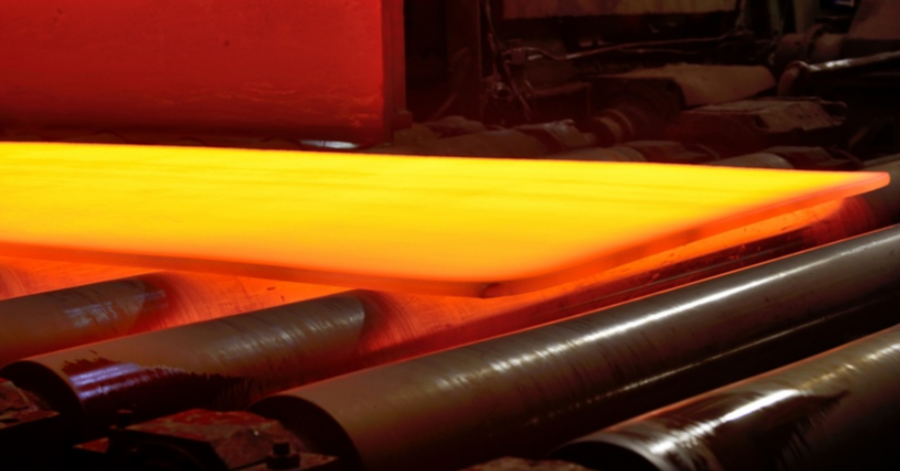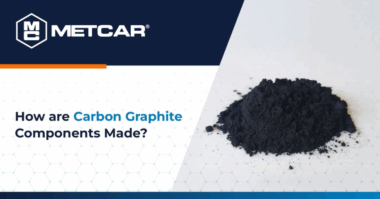50-foot heat treatment conveyor furnaces can be designed to process material 16+ hours a day. These furnaces can reach temperatures upwards of 2000°F, can have over one hundred rotating shafts, and regular maintenance is required for each shaft.
It is a major challenge in and of itself to maintain these massive pieces of equipment. Constantly applying lubrication to the bearings that support the rotating shafts is cumbersome, and frequent replacement of these bearings is extremely taxing on any maintenance crew. Instead, conveyor furnace manufacturers often turn to self-lubricated high performance carbon graphite bearing assemblies as an all-encompassing solution.
How To Choose A Pre-Engineered Bearing Assembly
Pillow block and flange block bearing assemblies are widely used in industrial applications across multiple industries, ranging from hot air dampers to the aforementioned heat treatment furnaces. Typically, these assemblies come in many different sizes and styles. When choosing a pre-engineered bearing assembly, there are a number of considerations to take into account.
1. Determine Which Assembly Type You Need.
Bearing assemblies often fall into two categories – flange blocks and pillow blocks. The difference between these two types of bearings is in the orientation of their bolt holes relative to the shaft axis. A flange block’s bolt holes are in line with the shaft axis while a pillow block’s bolt holes are perpendicular to this axis.
The decision to use a pillow block or a flange block is often based largely on ease of installation – whichever type is easiest to mount in your application is likely the right choice.
2. Choose A Housing Material.
Once the general bearing assembly type is identified, the housing material must be chosen. For heavy duty applications, cast iron housings have proven to provide the strength and durability needed to support heavy loads.
Stainless steel housings can be used in applications which don’t require the same degree of strength. One noteworthy benefit of using stainless steel is that these bearing assemblies can be used in applications where sanitary conditions are key, such as in conveyor ovens for food production.
3. Select A Carbon Grade.
Many factors go into the carbon grade selection:
What is the application’s operating temperature?
Will the bearing be running dry?
What loads are involved?
It is essential that questions like these are taken into account and the proper material grade is selected for each application individually, as the carbon graphite grade selection is application-dependent and has a major impact on bearing performance.
4. Get The Right Bore Size For Your Shaft Diameter.
One of the final considerations when selecting the proper bearing assembly is the bore size. It is important that a sufficient running clearance is designed so that the shaft does not seize in the bearing.
- For dry running applications, it is recommended that this clearance is about 3-0.5% of the shaft diameter.
- For wet running applications, this clearance can be a bit tighter, about 1-0.3% of the shaft diameter. This is due to the fact that a hydrodynamic film forms in wet running applications which aids in decreasing the coefficient of friction and preventing shaft seizure. This is the case even in applications where the bearing is just exposed to “splash conditions” and is not fully submerged.
Pre-Emptive Maintenance To Manage Demanding Conditions
There can be hundreds of bearings supporting shafts rotating nearly 24/7 in many conveyor oven applications. This demanding duty cycle coupled with the extreme heat often involved in these applications means that pre-emptive maintenance is absolutely necessary.
As is the case with any type of bearing, carbon graphite bearings will wear over time and will need to be replaced at some point. Luckily, most carbon graphite bearing assemblies are designed with a strong emphasis on ease of maintenance. Typically, only the carbon graphite cartridge needs to be replaced, not the full assembly.
The carbon graphite cartridge consists of the carbon-graphite bearing itself and a stainless steel spherical ring into which the carbon is press fit. This ring allows for the bearing to be self-aligning, which is crucial both during the shaft installation process and throughout the life of the bearing. The replacement of these cartridges is often as simple as removing a set screw which holds the spherical ring in place and twisting the cartridge to a position where it can slide out of the assembly. This means that you don’t have to replace the entire housing every time the bearing shows too much wear.
Metcar’s engineering team is always happy to help you select the correct bearing assembly for your application. We know how important proper bearing selection is for the success of your design and are always excited to offer our years of experience to support your project.
View Metcar’s pre-engineered products, or get in touch with an engineer to find a solution for your design today.




